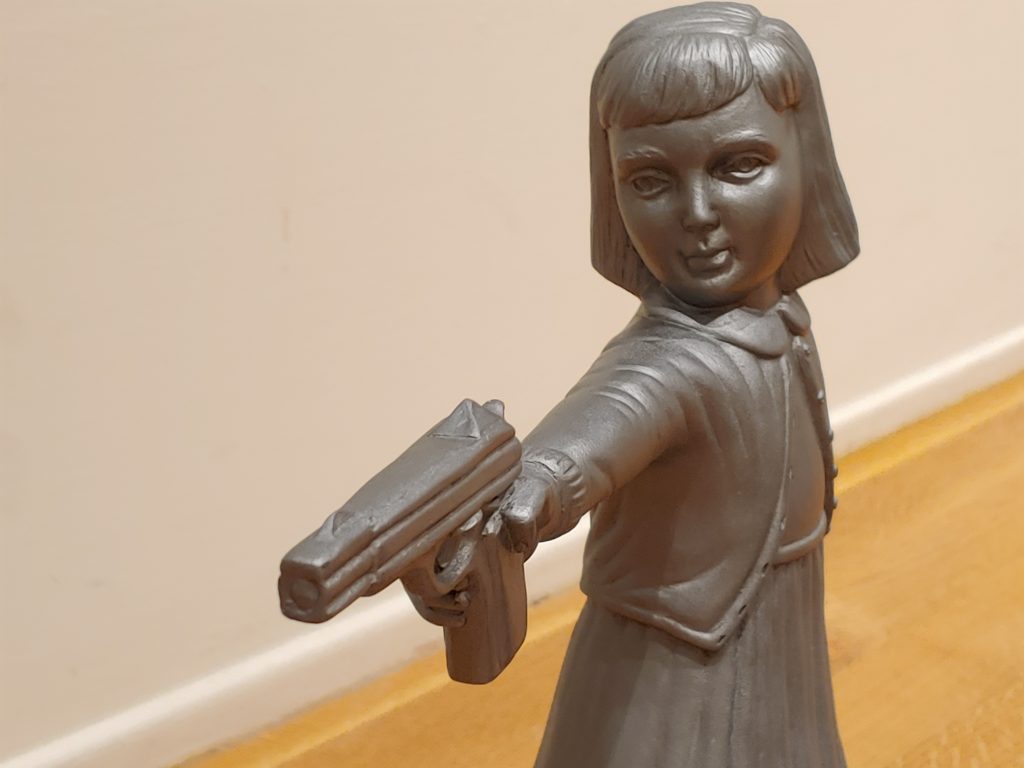
The other week, I dusted off my Pentax and took my cousin’s senior portrait.
The experience brought back memories of my own yearbook photo—a glossy, airbrushed lie. At 17 my forehead was acned, my complexion spotty. You wouldn’t know it from looking at my senior picture.
The tradition of eternalizing our high school selves in yearbooks is weird and softly deceitful. But it’s not too different from portraiture’s origins, when wealthy patrons would pay painters for flattering likenesses, presumably ones that’d last forever.
Yes, the tradition of portraiture is old—the tradition of children-as-individuals, less so, and the existence of the teenager, even newer.
The Newport Art Museum unfolds these themes with two new shows: “Winslow Homer: America at Play” and “Forever Young” are now on view through December 1 and 31, respectively.
Curator Francine Weiss rarely shies away from her expertise of photography in collection-focused exhibits like these. As expected there’s a generous helping of gorgeous photographs on display. Weiss said she reached out to artists, galleries and institutions to widen the exhibit’s scope and variety.
You might be glad she did, as one can now see photos from many thought-provoking photogs. There’s Sally Mann, whose “Kelly and the Deer” juxtaposes dangling carcasses with a 12 year-old girl’s androgynous swagger. Suzanne Révy’s photos of her teenaged sons avoid the traps and lures of the sentimental. “Reflection” is a perfectly apt title for a photo that will serve as such to anyone who’s ever been a moody boy.
Indeed, much of the work in “Forever Young” (as Weiss’ wall text points out) deals with “the belief that children have individual identities and psychological dimensions.” A more-than-adequate survey emerges, detailing kids and teens’ appearances in art of the last three centuries.
So an obvious omission is work made by teenagers themselves. Yes, such inclusions could’ve risked juvenilia, and subjective distance is useful in a show about something universal. But teenagers’ self-representation is nevertheless an important, missing piece.
Swapping out the theme of individuality is companion exhibit “America at Play.” It consists of engravings of Winslow Homer’s illustrations, created for popular magazines and weeklies in the 1860s and 1870s. Homer’s images are mostly ones of collective joy. Compared to the contemporary works nearby, his sceneries are less about interior states than shared activities.
But Homer doesn’t evaporate children’s humanity. A memorable diptych, “Flirting at the Seashore and on the Meadow,” compares fledging feelings to adult ones. Puppy love fills the day, while adult passion rendezvouses at night, hiding behind the sound of waves.
As Weiss explains in the wall text, Homer’s work “became part of the fabric of nineteenth-century visual culture.” Engineered for nostalgia, Homer’s prints offer, perhaps, an uncomplicated vision.
Back in “Forever Young,” Cynthia Consentino takes on a much more troubling social reality. In “Erin” and “Girls with Guns,” a girl statue (smirking, arms akimbo) is defended by a battalion of armed, doll-sized, silver girls. Its energy is ambiguous enough that it could be a myth or a meme, with its possible interpretations ranging from laughter to terror.
Conversely, myth becomes reality in Diane Arbus’ photographs. Here, in a tiny square of silver gelatin, is one of Arbus’ most famous images: “Identical Twins, Roselle, New Jersey, 1967.”
According to the Mount Holyoke Art Museum, who loaned the print for this exhibit, the reverse contains a note inked by Arbus herself, written to a friend whom she missed at an exhibit opening. That this particular print was used as a postcard only enhances its intimacy, its totemic powers. I was reminded instantly that this is my favorite photograph.
The father of the twins pictured wasn’t as impressed. Bob Wade told the Washington Post in 2005: “We thought it was the worst likeness of the twins we’d ever seen….I mean it resembles them. But we’ve always been baffled that she made them look ghostly.”
A senior picture is an idealized representation; it’s both alike and alien. “Identical Twins” is similar, presenting an ideal binary: one twin smiling, the other stoic. Together they form a contradiction, one that made me feel young and unsure all over again.
That we ourselves contain such opposites is a fact of existence we learn poignantly, sometimes painfully, in adolescence and beyond. As the philosopher Hegel wrote: “Every actual thing contains a coexistence of opposed elements.”
Or, to put it another way: we are all identical twins from Roselle, New Jersey.
-30-
Reprinted from Newport Daily News (October 2019)
Also syndicated in Providence Journal (Nov 14, 2019 print edition)
Editor: Will Richmond